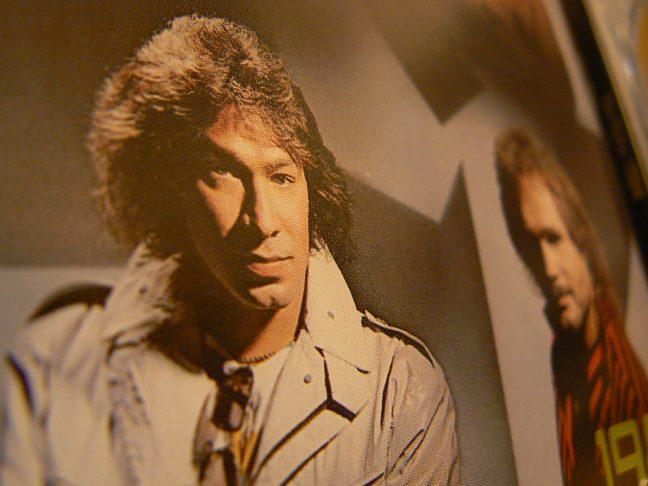When I heard guitar icon Eddie Van Halen had passed away after a long bout with cancer, it seemed only fitting to pay my respects by reviewing Van Halen’s self-titled 1978 debut album.
In a way, the copy of Van Halen used for this review was already a tribute to the band’s legacy. The record, beaten and scratched from hundreds of tosses onto various turntables, sounds as if it is grinding down the needle with each rotation. But the record’s condition pales in comparison to the rips, scratches and peels that lace the cover’s surface.
The sleeve that once offered the vinyl protection has been lost to the 80s. The only thing found inside the cover is my dad’s name, a message from the past scrawled in messy capital letters. This particular copy’s edition screams of Van Halen’s ethos, reckless youth and careless fun.
If you go reading through reviews and retrospectives of the band’s albums, you’ll see the word “fun” often. Such a word belies a musical superiority which takes the band’s music on face value, and, in doing so, rejects the idea that the band could hold greater worth. After listening to Van Halen in full, I urge you not to fall into this trap.
Far from a demonstration of nonchalant excess, Van Halen is a prime example of the depth that can spawn from productive conflict. Though bassist Michael Anthony and drummer Alex Van Halen turn in strong performances, the outset clarifies this is truly a two-man show between the virtuosic guitar playing of Eddie Van Halen and preening showmanship of David Lee Roth.
They each get their moment to shine individually — Van Halen’s near unmatched solo ability explodes on “Eruption,” and Roth’s flair is on display during the bluesy, yet suggestive “Ice Cream Man.” But the band is at their best when these competing styles clash.
This beautiful collision is undeniable in “Jamie’s Cryin’,” the opener to the album’s second side. Built around the cliché rock and roll narrative of a one-night stand, the song maintains genuine feeling because of the band’s two stars.
Fitting with the lyrics, Eddie Van Halen makes his guitar weep with some artful string bending, while Roth’s voice leaps up to meet each note. The song is both symmetry and competition, and while this clash of sounds and styles would lead to Roth’s first departure in 1985, for now the sound is nothing but sweet.
What remains mystifying about Van Halen is the immediate certainty of the band’s identity. When so many groups struggle to define themselves in their first efforts, it is easy to forget this is just their debut album. From the very first note, two dynamics are clear — the productive battle of creativity between Van Halen and Roth detailed above and the group’s sly inventiveness.
To recognize the innovative nature of Van Halen, listeners need to put aside the hindsight developed in the forty-odd years since the album’s release. Yes, it is obvious that within five years of Van Halen’s release, every record company had bottled and distilled poor copies of the album’s main musical tenants.
It must be noted that at the time of release, disco was dominating the airwaves, and the rock mainstays of the early 1970s were beginning to fade. In this vacuum, Van Halen did not simply follow a formula, rather they wrote an album which would dominate the next decade.
With this in mind, I rate Van Halen five out of five stars.


